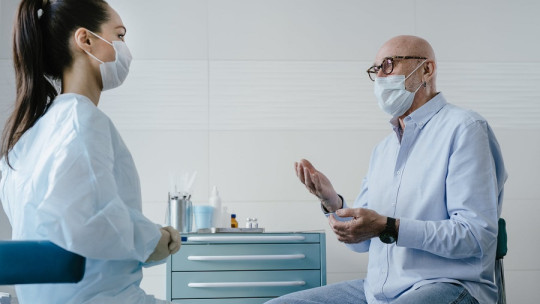There are many types of addictions that exist, and each of them can affect the person who suffers from them differently. Currently, thanks to several years of study and design of intervention programs in the field of psychology and medicine, we can find a series of elements common to each of these intervention programs.
The team of professionals specialized in detoxification must carefully study not only the addiction that the person has (taking into account whether it is chemical or behavioral) but also their social and economic environment, the type of social relationships they maintain and their family situation.
In addition to that, it is important that detoxification processes are based on scientifically proven therapies and guidelines and that they guarantee both the reintegration into society of the person who had the addiction.
In today’s article we will briefly present The main phases of an addiction detoxification program designed by highly qualified professionals and based on scientific evidence.
What are the main phases of the addiction detoxification program?
Detoxification programs for people with addiction cases are usually well structured and have well-defined phases throughout the process, through which the patient goes through in an orderly manner with the support of the therapist or therapists who handle their case.
These are the elementary phases that an addiction detoxification program must have, whether it is a chemical addiction (those in which addictive substances intervene) or a behavioral one (occurs in those addictions without a chemical substance, in which only activities that generate addiction are involved).
1. Initial contact
The first step in a detoxification program begins when the affected person or the family of the person with the addictive disorder contacts the center to explain their problem and request professional help.
In this phase, an initial assessment interview is carried out in which the therapist asks a series of questions about the nature of the addiction, the problems that the person is going through, its demands and the objectives and procedures of the treatment that must be carried out,
Once the patient is considered suitable for treatment, admission to the center is specified, if necessary, and all protocols and health and logistical instructions that must be followed to begin the detoxification process are established.
2. Residential admission and Therapeutic Community process
In the initial phase of residential admission in an environment separated from the patient’s usual family or social environment, the entire therapeutic process is carried out to ensure that the person successfully overcomes the stages of detoxification from the drug or addictive behavior, dishabituation and rehabilitation of their addictive behavior. The person is placed in a social context in which it is easier to overcome abstinence in its most intense stage and stinging, when the body struggles to adapt again to a reality without drugs.

This phase lasts around 4 months (although the duration may vary) and in it the team of therapists and professionals at the center work together so that the person avoids relapses and overcomes their addictive disorder completely, almost always within the center. detoxification.
The patient will remain within the center’s facilities until a month and a week have passed, then they will be able to leave on weekends to see their family.
3. Reconnection with the outside
The reconnection phase with the outside will consist of the person You will be able to start leaving the center or seeing your loved ones gradually and systematically when the corresponding time milestones have passed.
The patient will be able to call his family after 21 days of admission; If you have children, you will be able to make video calls to your family after 2 months of treatment; In this phase he will also be able to hold a family or virtual meeting (after 30 days) and he will also be able to go out for the first time to see his family for two days (after a month and a week).
According to the terms established in the agreed conditions, after one month and 3 weeks you will be able to go out for a full weekend and after 2 months and one week you will be allowed another outing for 2 full days to see your family. In all these exits A series of therapeutic objectives must be established and met and abstinence must be respected.
4. Readaptation to the new personal reality
This third phase takes place after 3 months of treatment and begins when the person has complied with strict abstinence throughout the detoxification process and has shown permanent good behavior.
In this phase, departures continue for a full weekend and Essential aspects are worked on to discharge the patient : The development of healthy leisure and free time habits is consolidated; job is sought; training objectives are established and a healthy social network is established.
5. Therapeutic discharge and outpatient follow-up
The last phase is carried out after the completion of the detoxification process and aims to incorporate the person into their family, work and social environment with the maintenance of absolute abstinence and all the behavioral and cognitive changes that have been worked on and they have been maintaining.
This phase also consists of monitoring the person by the professionals who have treated them, resolving your doubts and addressing unforeseen events and concerns that arise as well as advice from friends and family to prevent relapses and ensure that the change is real and permanent.
Therapists conduct weekly follow-up sessions with the patient and also maintain close contact with family members, who ensure at all times that the changes remain permanent and that the person does not relapse into their addiction.









